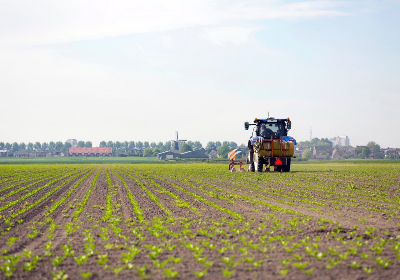
©
Нові дані європейської супутникової служби Copernicus засвідчують, що цьогорічний березень був найспекотнішим у Європі за всю історію спостережень. Середня температура сягнула 14,06 °C — на 0,65 градуса вище за норму 1991–2020 років. Найбільше потепління зафіксовано у східній частині континенту, а також над північно-східною Атлантикою і Середземним морем. Фахівці пов’язують це з припливом теплого повітря з півдня, що є ще одним свідченням впливу кліматичних змін. Упродовж березня у Нідерландах і Бельгії спостерігалася рекордна посуха : у Нідерландах випало лише 6 мм опадів замість звичних 53. Це вже має наслідки для природи: підвищується ризик лісових пожеж, а лучні птахи потерпають від нестачі корму. Карта Copernicus демонструє масштаб посухи: окрім Нідерландів, значне відхилення від норми зафіксовано у Великій Британії, Ірландії, Туреччині та Греції. Натомість південь Європи буквально залило: в Іспанії березень супроводжувався майже безперервними дощами та буревіями. Такі різкі кліматичні коливання стають дедалі частішими, і Copernicus наголошує: хоча глобальний температурний рекорд цього березня не побито, тенденція до потепління не сповільнюється. Значне зменшення морського льоду як в Арктиці, так і в Антарктиці — ще один тривожний сигнал змін, які охоплюють увесь світ.
March 2025 Breaks European Heat Records
Europe has just experienced its warmest March on record, according to the latest data from the EU’s Copernicus satellite service. Average temperatures across the continent reached 14.06°C, marking a 0.65°C rise compared to the March average from 1991 to 2020. The most notable anomalies were observed in Eastern Europe, as well as across the northeast Atlantic and the Mediterranean, driven in part by unusually warm air sweeping in from the south — another clear signal of accelerating climate change. This unusually warm March brought stark contrasts in weather patterns. The Netherlands recorded just 6mm of rainfall — a fraction of the typical 53mm — placing much of the country under record-setting drought conditions. The consequences are already visible: increased wildfire risk and dwindling food sources for meadow birds. Copernicus data shows similar drought levels across Belgium, parts of Germany, the UK, Ireland, and even further south in Greece and Turkey. Meanwhile, southern Europe faced the opposite extreme. Spain was lashed by relentless rain and storms throughout March, leading to some regions recording their wettest month in nearly half a century. These climatic divergences are becoming more frequent, fuelled by global warming both on land and at sea. While this March didn’t surpass global temperature records, polar regions continued to suffer — with sea ice levels in both the Arctic and Antarctic remaining alarmingly low, reinforcing concerns over the planet’s shifting climate equilibrium.

©
652